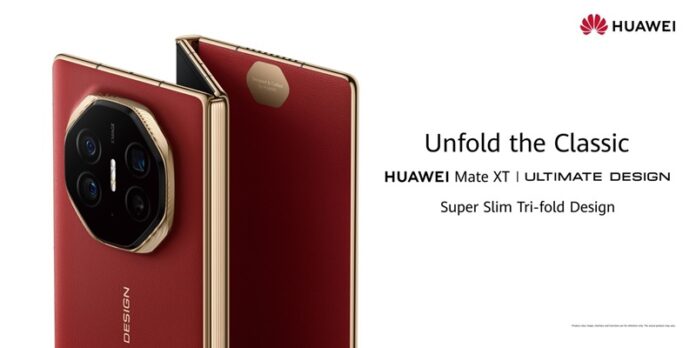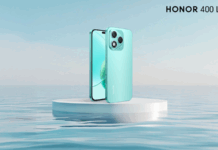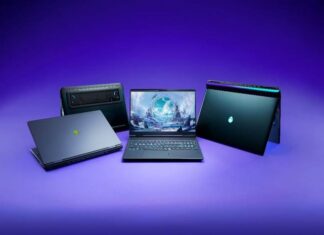When Huawei surprised the world with its announcement of the first-ever triple foldable smartphone, shockwaves rippled throughout the tech industry. The product amassed an impressive 3 million pre-orders ahead of its release in China, and renowned tech experts worldwide eagerly sought to review the device hands-on before its global rollout.
But how did foldables rise to popularity, and how did HUAWEI Mate XT | ULTIMATE DESIGN’s groundbreaking innovation contribute to the evolution of foldable technology?
Early Emergence: The Beginning of Foldables
The tech boom of the 2010s saw unprecedented growth in smartphone capabilities. Information accessibility expanded, cross-device integration became more seamless, mobile software development advanced significantly, and audio-visual entertainment diversified.
For years, these advancements drove smartphone screens to increase in size to handle growing information demands while maintaining portability. We swiftly transitioned from Motorola’s DynaTAC in 1983 to IBM’s touchscreen in 1994, then to Samsung’s 5.3-inch Galaxy Note in 2011, followed by the full-screen smartphone era initiated by the iPhone X in 2017, eventually leading to a new era of foldables sparked by the Huawei Mate X in 2019.
Simultaneously, PCs shrank into thinner, lighter designs, eventually leading to the creation of the lightweight tablet. In just seven years, we witnessed the development of lightweight laptops, starting with Intel’s launch in 2003. The HUAWEI MatePad followed suit, pioneering a tablet-PC “hybrid” in 2023, merging a large screen with exceptional thinness in a single device.
At the convergence of these trends emerged the foldable smartphone, striking a perfect balance between large-screen efficiency and portability. By 2010, Huawei was already at the forefront of foldable technology production. The launch of the HUAWEI Mate X in 2019 is regarded as a pivotal moment in foldable history, transforming the product from a novel invention into a mainstream phenomenon. With this shift, research institutions predicted a compound annual growth rate of 21% for the foldable market from 2019 to 2022, forecasting it would reach USD 51.1 billion by 2022.
Dawn of a New Era: The Birth of the Trifold
As dual-screen foldables gained widespread adoption, Huawei was already preparing to unveil the unimaginable — a triple-display foldable that combined the lightweight, thin, and durable qualities of traditional dual-screen foldables. According to Huawei spokespersons, the vision for the trifold began five years before its launch, during the early days of dual-screen technology.
While prototypes of triple foldables had appeared at MWC and CES in the past, none proved feasible for mass production. It was not until the release of Huawei’s latest innovation, the HUAWEI Mate XT | ULTIMATE DESIGN, that the world witnessed the transformation of the impossible into reality.
This triple foldable offers a perfect fusion of large-screen productivity and portability, enhancing the user experience. It’s the first device to truly merge the functionalities of a tablet PC and a smartphone, creating a new category of handheld technology.
If the Tesla Model Y represented the future of automotive terminals, then the trifold signifies a new revolution in mobile displays with its groundbreaking folding design.
Beyond multi-tasking and immersive viewing, the trifold smartphone could revolutionise how users live and work by seamlessly integrating digital and real-world interactions. With single, dual, and triple-screen modes, users can accomplish more simultaneously, enhancing leisure and productivity.
Trailblazing the Future of Smartphones
Huawei’s bold leap into uncharted innovation has set a new benchmark, pushing the company ahead of its competitors. According to Counterpoint Research, Huawei dominated the global foldable market with a remarkable 257% year-over-year growth in Q1 2024.
Since Huawei’s entry into this space, other brands have scrambled to keep up. Samsung has announced plans to launch its version of a trifold smartphone, while Apple has yet to reveal its own foldable due to developmental setbacks, potentially delaying its release to 2027 or 2028.
At a time when the global smartphone industry grapples with economic challenges, Huawei’s strategic foresight has sparked inspiration and injected fresh energy into a market that had grown complacent, even stagnant, with repetitive product cycles that yield little by the way of innovation.
Experts predict that the HUAWEI Mate XT | ULTIMATE DESIGN could be the catalyst for a new wave of advancements, inspiring software developers to optimise apps for foldable screens and drive a more dynamic market ecosystem. As an industry leader, Huawei’s tri-fold sets new benchmarks and challenges competitors to push the boundaries of mobile innovation. This shift could lead to a future where foldable technology becomes the norm, redefining the way we interact with our devices.
An Exemplary Story of Audacity and Innovation
For years, we’ve accepted the limitations of single-screen devices, but the digital age demands more. With engineers and innovators now pushing beyond these boundaries, the arrival of the HUAWEI Mate XT | ULTIMATE DESIGN marks the beginning of a new chapter in mobile technology. Its groundbreaking journey is a testament to visionary thinking—proof that bold innovation drives real progress. As the industry adapts to the era of tri-fold smartphones, one thing is certain: how we interact with technology will never be the same again.
Article Provided


























